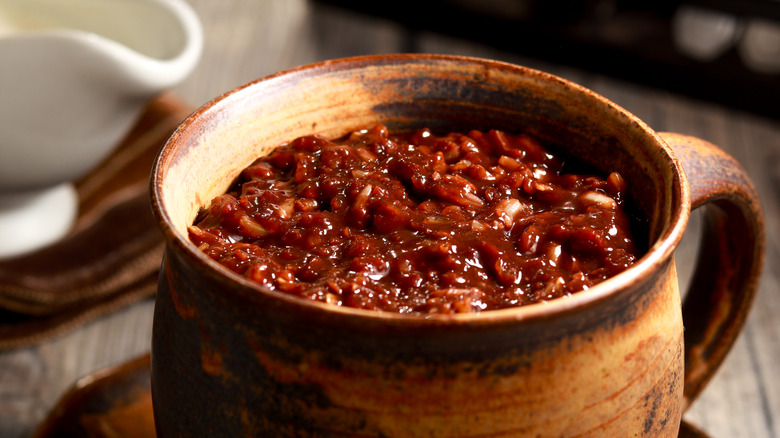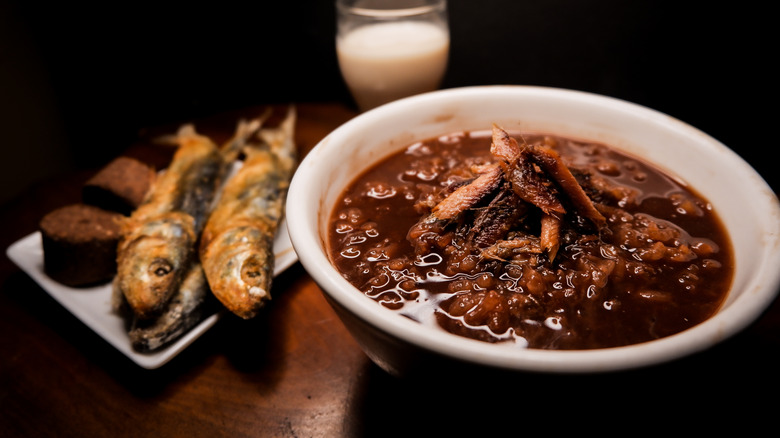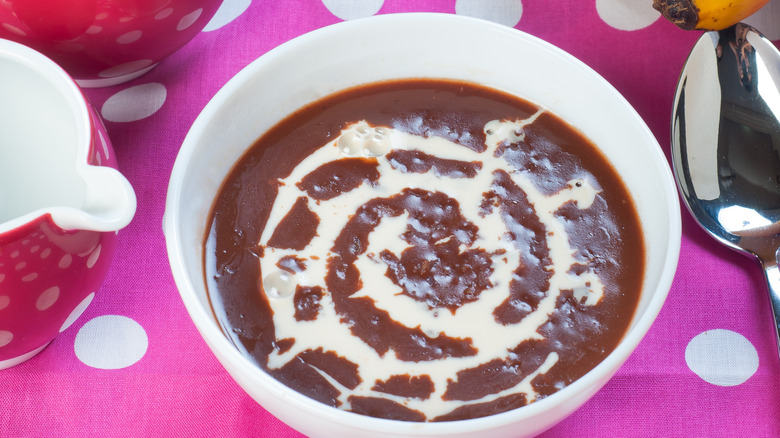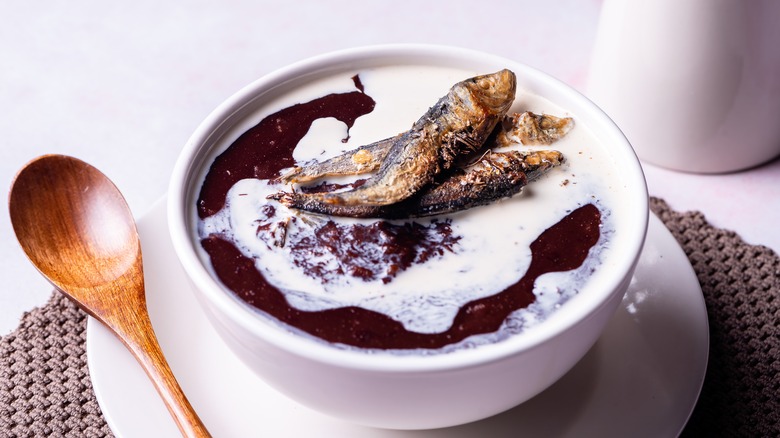Champorado With Tuyo: A Filipino Chocolate Porridge With Dried Fish
Glutinous or sticky rice is an important ingredient in Philippine cooking. When cooked whole, it is used to make desserts like bikoand when sticky rice is ground into flour, it becomes the main ingredient for sweets that include the steamed rice cakes puto and kutsinta, as well as the colorful sapin-sapin. Glutinous rice is also used to make a chocolate-flavored dish known as champorado.
While this might be considered a type of rice pudding dessert in other parts of the world, it's very much treated as a breakfast item in the Philippines that is akin to porridge. And even though it might not be to everyone's taste, no champorado breakfast would be complete without its culinary soul mate, a type of whole, dried salted fish known locally as "tuyo" or dried herring. Together, champorado and tuyo are a true Filipino breakfast classic, up there with the country's take on steak and eggs, tapsilog.
History of champorado
When galleons made the crossing between Acapulco, Mexico and the Philippines' capital, Manila between 1565 and 1815, they were packed to the rafters with valuables, porcelain, ivory, and silk going one way, and Spanish silver going the other. This trading relationship didn't exactly benefit the Philippines economically, because Spain wasn't interested in developing the country — but it did leave the country with a rich culinary tradition — one which Smithsonian Magazine once described as "Asian Fusion before 'Asian Fusion' existed." One of the dishes that came over from Mexico is the creamy breakfast dish Filipinos now know as champorado — a classic Filipino breakfast dish made with sticky rice, milk, sugar, and pure cocoa.
It may come as a surprise for some Filipinos to find out that their beloved champorado has an ancestor because Mexico has its own version of champorado. Unlike its Filipino counterpart, Mexican champurrado is not consumed as a meal, it is a warm chocolate drink made with milk, chocolate, and cinnamon, to which a bit of corn meal or masa harina has been added to make the liquid thicker. Mexican champurrado is similar to atole, which has been enjoyed since pre-Hispanic times. But because corn also came over on the galleons and is not indigenous to the Philippines, rice was used for the localized version instead.
How champorado is made
While Philippine champorado can be made with cocoa powder, it is traditionally made with solid chocolate known as tablea, which is made out of pure cacao beans which have been roasted, and ground. To make champorado, Filipinos use sticky rice and cook it in water before adding the tablea and stirring until the chocolate has melted and amalgamated. If sticky rice is not available, long-grain rice with a bit of rice flour to thicken the mixture works well as a substitute.
The chocolate mixture is meant to be cooked until the rice is translucent and the liquid has been absorbed. While it looks and smells chocolatey, the porridge won't taste anything like rice pudding, because the tablea itself contains no sugar. Instead, sugar needs to be added to the porridge; it is then served with swirls of evaporated milk or condensed milk, either of which is added before the dish is served, to make it more creamy.
How champorado is eaten with tuyo
Thanks to its affordable price points, tuyo, also known as "stinky fish" has broad appeal that makes it universally loved across the country's vast socio-economic spectrum. Tuyo is most often deep-fried until it is crisp and served with spiced vinegar if it's enjoyed with plain rice. There are plenty of suggestions that illustrate how tuyo can (or should) be served and eaten with champorado.
The fish can be served on the side before it is flaked or sprinkled on top of a spoonful of what is effectively chocolate rice pudding. Tuyo can also be served directly on top of the champorado. And while most love the combination, no one can explain how it came to be. The author of "Malagos Book of Chocolate" Clinton Palanca even admitted he understands it can look like a strange meal to other people. "Champorado and tuyo (dried fish) is a bizarre combination for anyone who hasn't grown up with it, but for us Filipinos it goes together like love and marriage," per Facebook.



